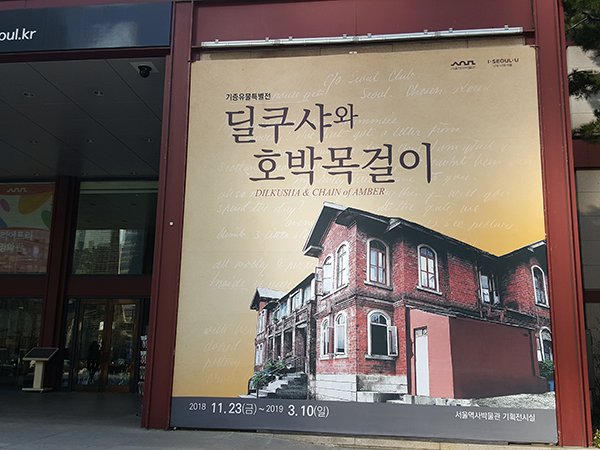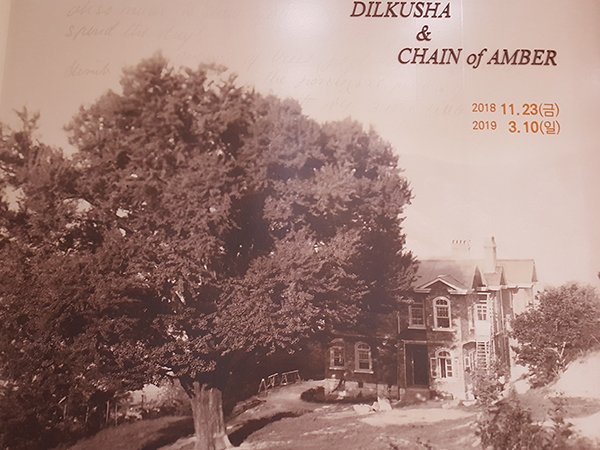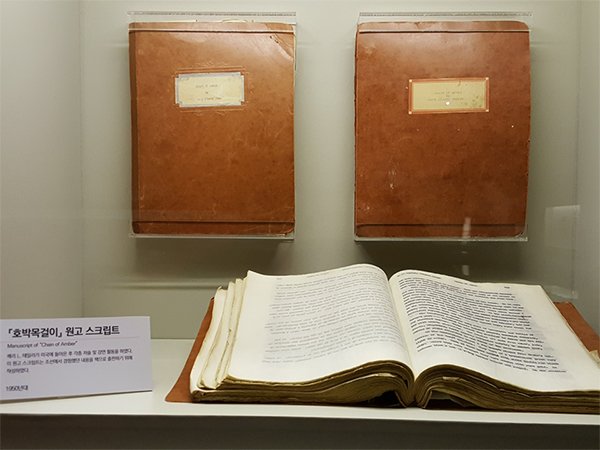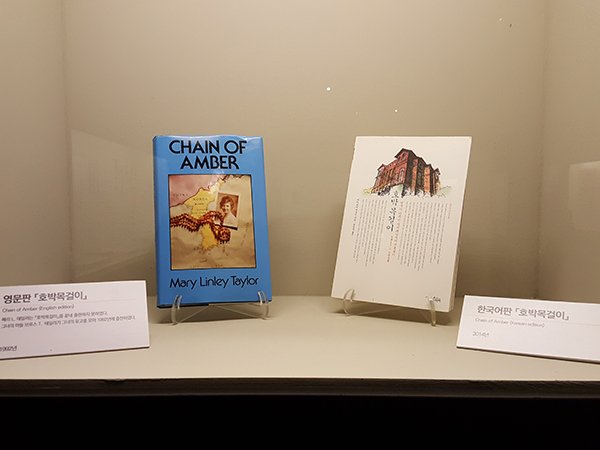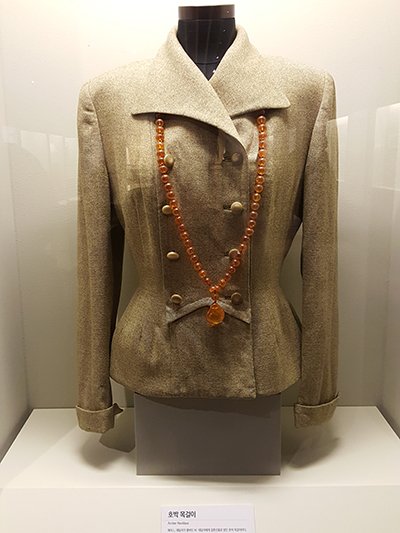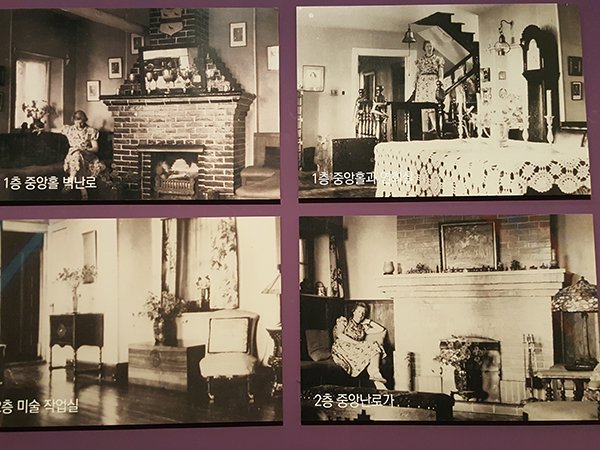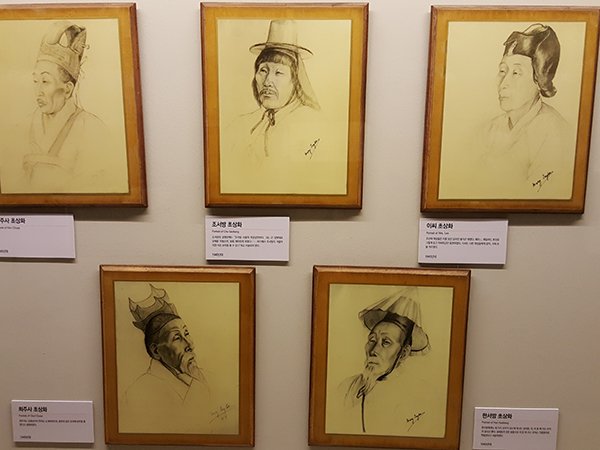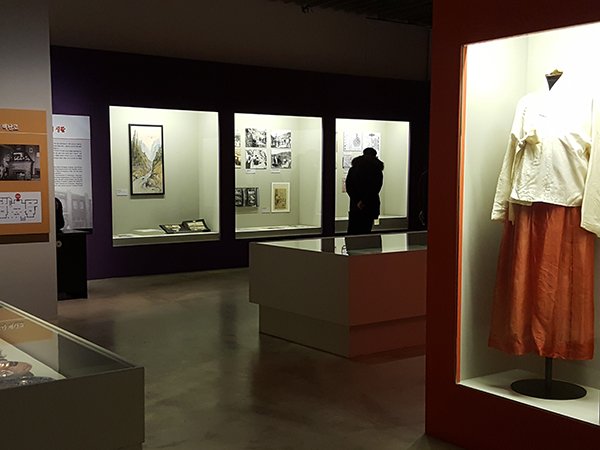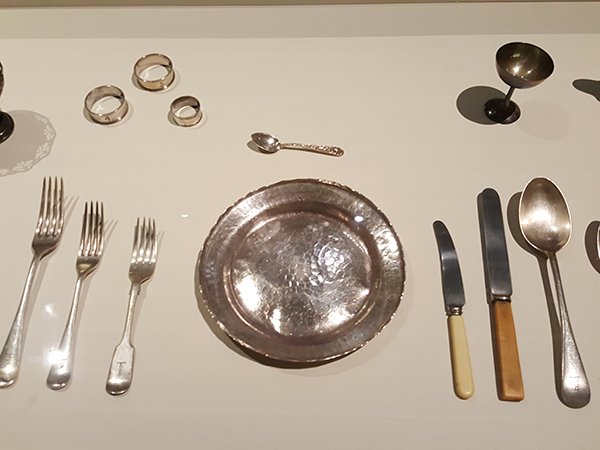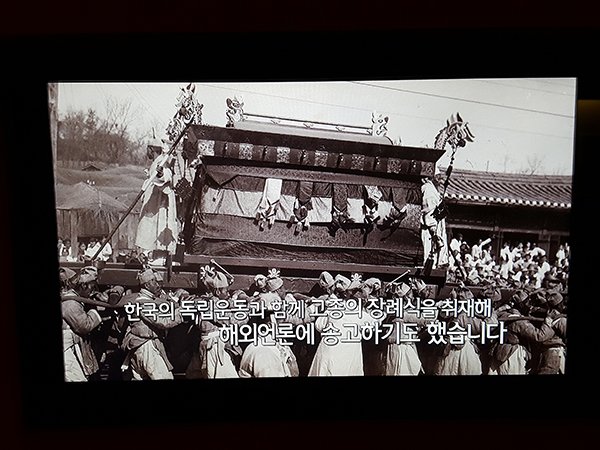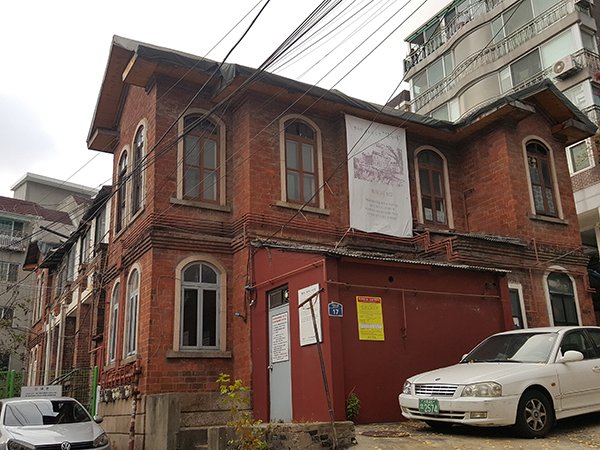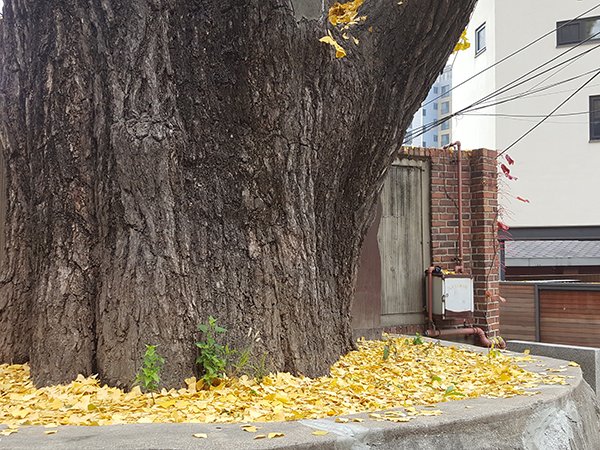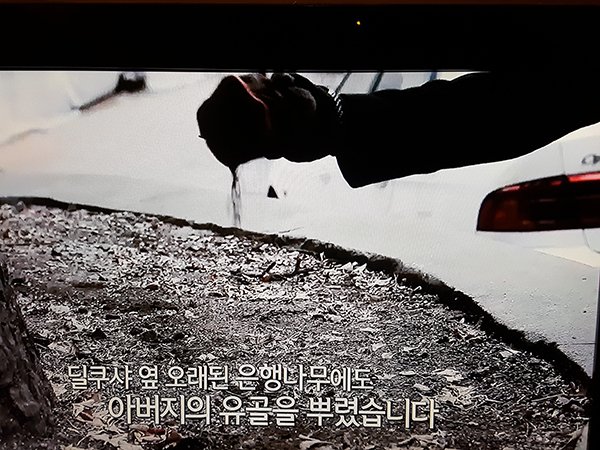In the center of Seoul, I was taking a walk in Sinmun-ro, and stopped when I spotted a large banner hung in front of the Seoul Museum of History far ahead. The house pictured in the large banner looked familiar; I realized that the house was one I discovered earlier and still go to from time to time.
I approached to see the banner.
I always take a walk in the neighborhood and there are few places that I don’t know about; a few years ago, I took a walk toward Haengchon-dong which I do not usually venture toward, and came across shoddy houses and vegetable gardens of cabbage, white radish, eggplant, and chilly like in the countryside, and walked behind those; what I found there surprised me.
There stood the biggest ginko I’ve seen in Korea, with a sign saying that it was planted by General Gwon Yul. The tree was so old and big; it looked like an animal, not a vegetable. And right in front of the ginko stood a handsome but old red brick house. The brick house looked out of the ordinary.
“Unless the Lord build the house, the builders labor in vain: Unless the Lord watches over the city, the guards stand watch in vain – Psalms 127-1.” Phrases from the Bible were written on a banner hung in front of the house. The house was empty. I later heard that after the owner moved, many people came to live in the house, but now the house was abandoned.
Whenever the big 600-year-old tree and the western style brick house came to my mind, I would go there as if I was Columbus, discovering the house. I went alone or with friends. Friends that I took to the house were all surprised by the house.
When I first came across that house, I texted my close acquaintances that they should definitely see the house. It was strange that I discovered this house only now – the house was just 10-minutes away from the house I had lived in for decades. For some reason, I hadn’t ventured out in that direction that much. I used to walk to the church in which I had been baptized when I was young, and I just took a walk around the courtyard of the church even though the church courtyard was just behind the house.
To find the house that I thought only I knew in the big picture. I got absorbed into the picture in spite of myself.
The story of the house unfolds in front of me through the title “Chain of Amber” – in pictures, writings, videos, paintings and collections.
I haven’t been able to find out about the owner of the house, but I learned that an American named Bruce Taylor came from the US after 66 years to look for the house for 2 months. He was born in Seoul, and his parents Albert and Mary Taylor lived in that house from 1923 to 1942.
My heart swells up at the records and traces of the lives from 100 years ago.
Albert ran a gold mine, had a store selling products like gramophones in Taepyeong-ro, Seoul. He was also an AP and UP correspondent. Mary, mother of Bruce, also stands out.
She wrote about her life at Seoul with the title “Chain of Amber”, after a wedding present. After she was gone, her son Bruce compiled and published the writing. She also drew beautiful scenery of Mt. Geumgang and Hwajinpo Beach; Eumchumgol in Gangwon-do where Taylor’s gold mine used to stand rouses a feeling of warmth, too. The episode of around 6,000 westerners who then lived in Seoul gathering at Union Club at Seoul, and modern Han-bok, Korean traditional dress that they wore then, are also among the collection.
The name of the castle that they liked in India was ‘Palace of Heart’s Delight’ in Sanskrit; “Dilkusha” is named after it. Pictures and paintings portray them from 100 years ago; silverware, jewelry and collections they used then are also high-class. Their granddaughter kept and donated the 1026 pieces to the city of Seoul; now the brick house at Haengchon-dong is designated as ‘cultural asset’, and city of Seoul renovated the brick house and opened it as a memorial hall.
A video projected on the wall shows Bruce, in his eighties, deeply moved at the sight of Sungnyemun Gate seen through the bus window. It seems like for decades he had missed his birthplace.
When Bruce was born on February 28th, 1919, Bruce’s father, Albert, saw nurses hiding printed documents beneath a cradle. He found out that those documents were the “Declaration of Independence” for the next day’s independence movement and submitted an article on it and King Gojong’s funeral to the foreign press.
Mary and Bruce were forcibly evicted by Japanese authorities. they tried to come back to Korea while in the U.S., but Bruce eventually passed away, failing to ever come back. After Bruce was gone, Mary buried him in Yanghwajin Foreign Missionary Cemetery, following his will. His granddaughter scattered his ashes at the stump of the ginko standing in front of the brick house. They truly loved Korea.
A record is magnificent.
I used to take a walk to that brick house that I belatedly discovered, and Mary Taylor who used to live there recorded her life and kept her amber chain and ring which came to be shown to me 100 years later.
I’ve been publishing books since 1980 and have been writing ‘culture essays’, sending them out to the world. All these have become too much and I want to give up. Yet, to see the records of 100 years ago quietly approach me, I wonder if I should change my mind.
Are thoughts and records the only things to remain?
